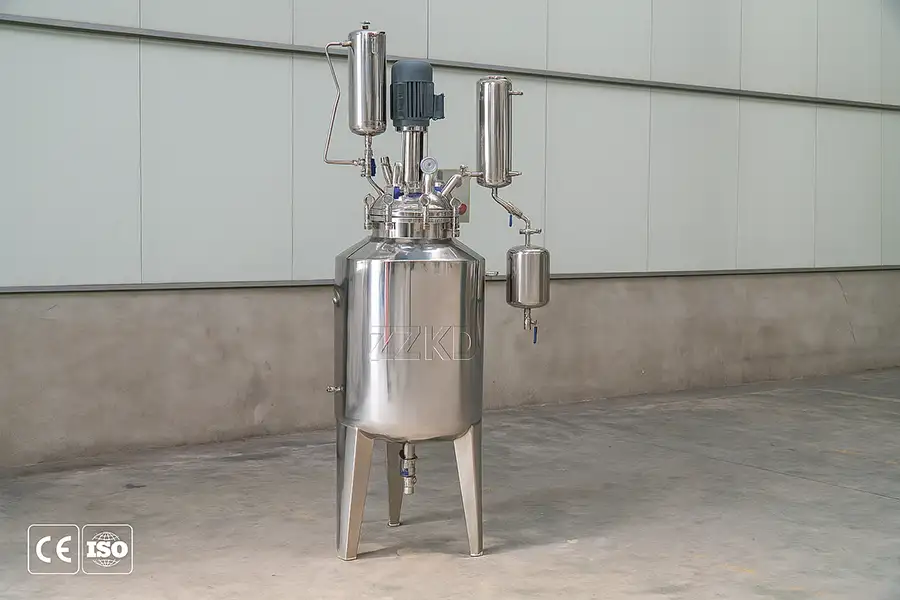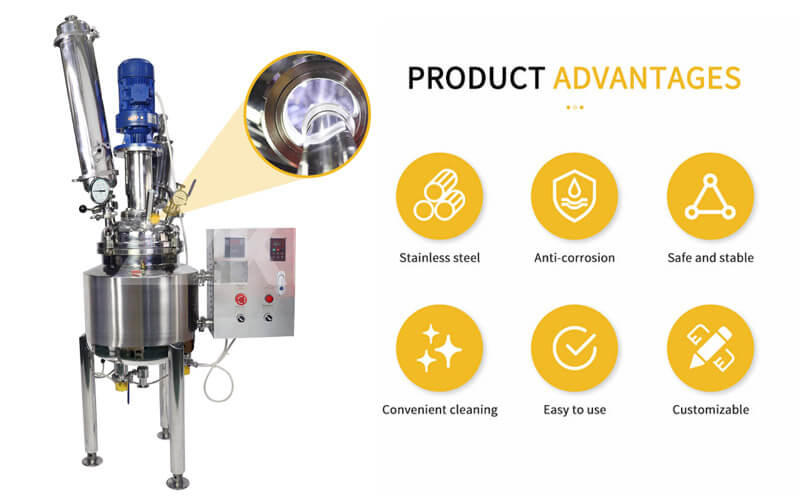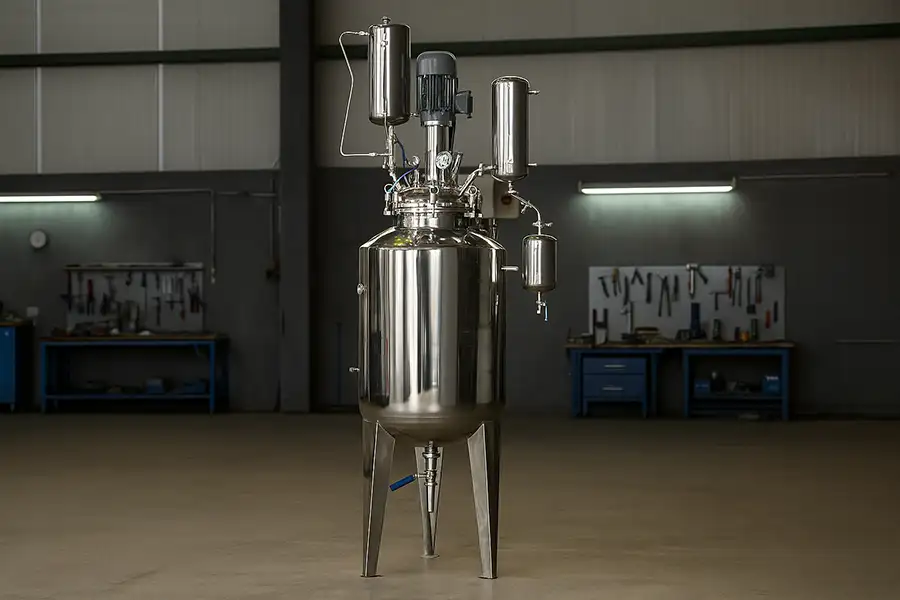A stainless steel laboratory reactor is a specialized vessel designed to carry out controlled chemical reactions under various conditions of temperature, pressure, and agitation. These reactors are widely used in chemical laboratories, pharmaceutical development, and material synthesis. Their stainless steel construction ensures durability, resistance to corrosion, and compatibility with a wide range of chemicals.

Why Stainless Steel?
Stainless steel offers exceptional resistance to heat, pressure, and chemical attack. This makes it ideal for laboratory environments where precision and safety are crucial. According to a study by the American Chemical Society, stainless steel reactors can reduce contamination risk by up to 40% compared to glass or plastic alternatives.
What makes stainless steel reactors more efficient than glass reactors?
Stainless steel reactors can withstand higher pressures and temperatures, enabling reactions that are not possible in glass vessels. Moreover, they offer better thermal conductivity, which improves reaction control and energy efficiency.
Applications in Modern Laboratories
Stainless steel laboratory reactors are used across multiple industries:
- Pharmaceuticals: For synthesis and testing of new compounds.
- Chemical Engineering: For studying reaction kinetics and process optimization.
- Material Science: For developing polymers, composites, and nanomaterials.
- Environmental Research: To test pollutant degradation and solvent recovery efficiency.

Design and Operation
A typical stainless steel laboratory reactor includes several key components:
| Component | Function |
|---|---|
| Reactor vessel | Houses the chemical reaction under controlled conditions. |
| Agitator | Ensures uniform mixing of reactants. |
| Heating/Cooling jacket | Controls the temperature of the reaction. |
| Pressure gauge and safety valve | Monitors and regulates internal pressure for safe operation. |
How does pressure affect the performance of a stainless steel laboratory reactor?
Pressure plays a vital role in reaction kinetics. Higher pressure can accelerate certain reactions and improve yield. Stainless steel reactors, especially high pressure autoclave reactors, are designed to handle these conditions safely.
Advantages of Stainless Steel Laboratory Reactors
The benefits of using stainless steel reactors include:
- Durability and long service life.
- Excellent resistance to corrosion and chemical reactions.
- High pressure and temperature tolerance.
- Easy cleaning and sterilization.
- Compatibility with automation and digital control systems.
According to a report by the International Laboratory Equipment Association (ILEA), stainless steel reactors can reduce operational downtime by up to 25% compared to traditional glass reactors, improving productivity and safety.

Integration with Modern Chemical Processes
In today’s advanced laboratories, stainless steel reactors are often integrated with systems such as solvent distillation units and stainless steel chemical reactors. This integration allows for continuous processing, solvent recovery, and real-time data monitoring.
Can stainless steel laboratory reactors be used for solvent recycling?
Yes, they can. When paired with a solvent recovery machine, stainless steel reactors enable efficient recycling of solvents, reducing waste and operational cost. This is especially beneficial for environmentally conscious laboratories.
Future Trends and Innovations
The future of stainless steel laboratory reactors lies in automation, digital monitoring, and sustainable design. Smart reactors equipped with sensors and AI control systems are becoming more common. According to a study by the European Chemical Engineering Council, automated reactors can improve experimental accuracy by 35% and reduce manual labor by 20%.
Conclusion
The stainless steel laboratory reactor represents the pinnacle of precision, safety, and efficiency in modern chemical research. Its robust design, adaptability, and compatibility with advanced technologies make it a cornerstone of laboratory innovation. Whether for small-scale experiments or industrial pilot testing, stainless steel reactors continue to drive progress in chemical science.
